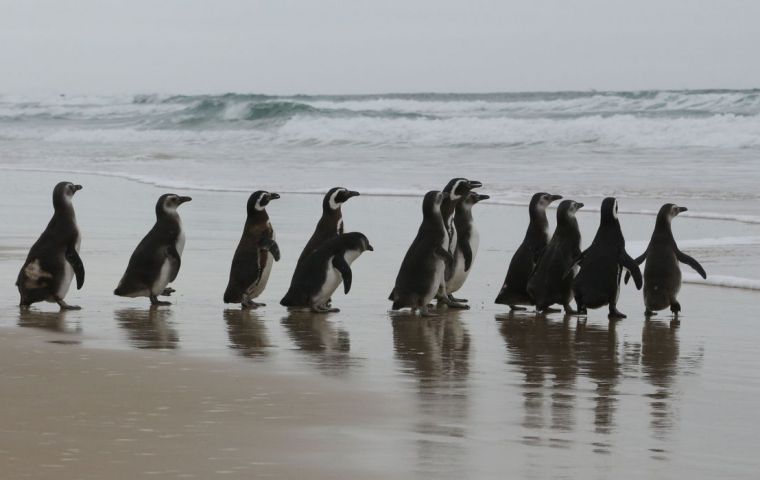MercoPress. South Atlantic News Agency
Some 6,700 Magellan penguins migrated to Brazil's coastline during winter
 Santa Catarina is the state where the most penguins have been recorded, a total of 4,741 so far this year, followed by Parana, with 1,028 birds
Santa Catarina is the state where the most penguins have been recorded, a total of 4,741 so far this year, followed by Parana, with 1,028 birds Brazil's Beach Monitoring Project, PMP, reports that more than 6,700 penguins have arrived mainly on Santa Catarina and Parana states coast during the migration season this year, which represents a 20% per cent increase in the number of marine birds coming over last year.
Annually, thousands of these marine birds arrive on the Brazilian coastline coming from Argentina and Chile. In all, a total of 6,747 birds have been registered on assorted southern Brazilian beaches so far this season.
The figures come from the environmental project Beach Monitoring Project (PMP), a program coordinated by Brazil’s state-run Petrobras oil and gas company that has as its aim rescuing, rehabilitating and returning to the sea mammals, tortoises and marine birds while monitoring the 3,000 kilometres of beaches in 10 Brazilian coastal states.
Santa Catarina is the state where the most penguins have been noted, a total of 4,741 of them reported so far this year, followed by Parana, with 1,028 birds, both regions being in southern Brazil.
Nevertheless, these birds have also arrived on the beaches of Sao Paulo (869), Rio de Janeiro (107) and Espiritu Santo (2), which are located farther north and more in the central portion of Brazil’s Atlantic coastline.
They are the Magellan penguins (Spheniscus magellanicus), very common in Argentina, Falkland Islands and Chile’s Patagonia region, and which between June and November, especially during the Southern Hemisphere’s winter, migrate toward the Brazilian coast to flee frigid temperatures farther south and to find food.
Many of the birds arrive on the coastline weakened or even dead due to the long journeys they make and those that are found alive are assessed and, if necessary, handed over to specialized centres to provide them with veterinary attention.
According to the PMP, the penguins usually arrive at the treatment units suffering from hypothermia, hypoglycemia and dehydration. Once rehabilitated, the birds are returned to their natural habitat after having a microchip implanted that will allow them to be monitored if they reappear on the Brazilian coast in the future.
Last year, 5,657 penguins were found to have visited the Brazilian coastline during the yearly migration.




Top Comments
Disclaimer & comment rulesCommenting for this story is now closed.
If you have a Facebook account, become a fan and comment on our Facebook Page!